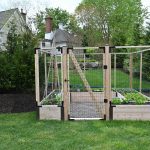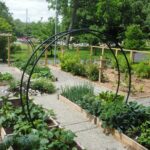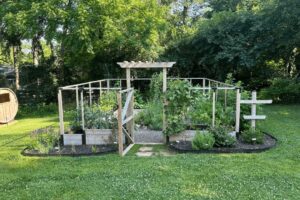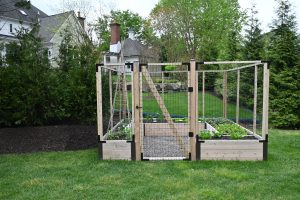
[et_pb_section fb_built=”1″ admin_label=”section” _builder_version=”4.16″ da_disable_devices=”off|off|off” global_colors_info=”{}” da_is_popup=”off” da_exit_intent=”off” da_has_close=”on” da_alt_close=”off” da_dark_close=”off” da_not_modal=”on” da_is_singular=”off” da_with_loader=”off” da_has_shadow=”on”][et_pb_row admin_label=”row” _builder_version=”4.16″ background_size=”initial” background_position=”top_left” background_repeat=”repeat” global_colors_info=”{}”][et_pb_column type=”4_4″ _builder_version=”4.16″ custom_padding=”|||” global_colors_info=”{}” custom_padding__hover=”|||”][et_pb_text _builder_version=”4.27.4″ _module_preset=”default” text_text_color=”#000000″ link_font=”|700|||on|||#000000|” link_text_color=”#000000″ header_2_line_height=”1.5em” hover_enabled=”0″ header_2_font_size_tablet=”” header_2_font_size_phone=”23px” header_2_font_size_last_edited=”on|phone” global_colors_info=”{}” sticky_enabled=”0″]
Designing a thriving edible garden starts with understanding the local wildlife. The types of critters in your garden – like deer, groundhogs, or rabbits – will influence your garden’s fencing needs and protection strategies. From there, you can design a garden that suits your gardening goals and other site factors. In this guide, we’ll break down which fencing and protection options we recommend for edible gardens based on several common garden pests.
[/et_pb_text][et_pb_text _builder_version=”4.27.4″ _module_preset=”default” text_text_color=”#000000″ link_font=”|700|||on|||#000000|” link_text_color=”#000000″ header_2_line_height=”1.5em” header_2_font_size_tablet=”” header_2_font_size_phone=”23px” header_2_font_size_last_edited=”on|phone” global_colors_info=”{}”]
Identify Your Garden Posts
Protecting your garden starts with choosing the right fencing and layout to keep out unwanted critters. Here’s how to handle common pests:
Deer are one of the biggest threats since they can wipe out your garden overnight. A 5–6 foot fence around your garden is the best way to keep them out. Even if you already have a property fence, adding a dedicated garden fence makes a big difference. Make sure it completely encloses the area and has a secure gate. Taller fencing works especially well in smaller gardens since deer need room to land when they jump. Adding spray or granular repellents outside the fence can help, but they’re not 100% reliable.
Groundhogs are another big problem because they climb and dig. They’ll scale a 4-foot fence or burrow underneath it to get at your plants. A tall fence—again, 5–6 feet—is a good start, but you’ll need to reinforce the edges to stop them from digging. You can use raised beds, buried fencing, or metal edging along the bottom of the fence. Look for signs of burrows near your garden and shore up those areas to keep them out.
[/et_pb_text][et_pb_image src=”https://backyard-eats.com/wp-content/uploads/2024/06/3-4.jpg” alt=”G-shaped raised bed garden in a sloped landscape” title_text=”Project1A_BYE” show_bottom_space=”off” _builder_version=”4.27.4″ _module_preset=”default” custom_margin=”20px||20px||true|false” global_colors_info=”{}”][/et_pb_image][et_pb_text _builder_version=”4.27.4″ _module_preset=”default” text_text_color=”#000000″ link_font=”|700|||on|||#000000|” link_text_color=”#000000″ header_2_line_height=”1.5em” header_2_font_size_tablet=”” header_2_font_size_phone=”23px” header_2_font_size_last_edited=”on|phone” global_colors_info=”{}”]
Rabbits can’t climb well but are experts at squeezing through small gaps or digging under fences. To block them, use a fence with holes smaller than 2 inches and at least 3 feet high. Tall raised beds are another great option to keep them out. Be extra vigilant in spring, when baby rabbits might find ways to sneak in.
Birds and squirrels are trickier since they can fly or climb into your garden. They’re more of a nuisance than a major threat, though—they’ll nibble on plants or dig around but aren’t likely to destroy everything. If they’re going after specific crops like berries, netting can help protect those plants. For the most part, it’s better to accept a little damage than to try to completely fence them out.
As for moles, voles, and chipmunks, these burrowers don’t usually go after your plants directly. Instead of fencing, try using granular repellents to discourage them. If you spot ridges, tunnels, or damaged roots, applying repellents around those areas can help. The key is to match your fencing and garden setup to the pests you’re dealing with. A little planning goes a long way in keeping your plants safe!
[/et_pb_text][et_pb_image src=”https://backyard-eats.com/wp-content/uploads/2024/06/11-4.jpg” alt=”Front view of raised bed garden with open gate and greenery” title_text=”11″ show_bottom_space=”off” _builder_version=”4.27.4″ _module_preset=”default” custom_margin=”20px||20px||true|false” global_colors_info=”{}”][/et_pb_image][et_pb_text _builder_version=”4.27.4″ _module_preset=”default” text_text_color=”#000000″ link_font=”|700|||on|||#000000|” link_text_color=”#000000″ header_2_line_height=”1.5em” header_2_font_size_tablet=”” header_2_font_size_phone=”23px” header_2_font_size_last_edited=”on|phone” global_colors_info=”{}”]
Designing Unique Garden Spaces
For smaller backyards, patio gardens, or other unique spaces, adding fencing can feel tricky, but it’s still possible to balance protection with aesthetics. Compact or custom fencing solutions are often the best option here. For example, in narrow patio-side raised beds, we’ve incorporated sleek, 5–6 foot deer-resistant fencing that blends well with the surrounding area while keeping pests out.
When dealing with perennial beds, such as strawberries, lightweight coverings or netting can offer extra protection from birds and other small animals without requiring permanent infrastructure. One effective approach we’ve used is building simple “cages” around strawberry beds. These structures use short fencing combined with a removable lid, allowing you to access the plants while keeping critters out.
Additionally, consider your garden layout when planning fencing. Walk-in fenced areas can maximize use of perimeter space and make it easier to tend to plants, while reach-over fencing for raised beds works well in compact spaces to prevent pets or animals from hopping in without restricting access. Thoughtful planning and creative solutions can help make even the most unusual garden spaces both functional and pest-resistant.
[/et_pb_text][et_pb_image src=”https://backyard-eats.com/wp-content/uploads/2023/10/DSC_0762-scaled.jpg” alt=”A narrow patio-sided raised bed garden with fencing” title_text=”DSC_0762″ show_bottom_space=”off” _builder_version=”4.27.4″ _module_preset=”default” custom_margin=”20px||20px||true|false” global_colors_info=”{}”][/et_pb_image][et_pb_text _builder_version=”4.27.4″ _module_preset=”default” text_text_color=”#000000″ link_font=”|700|||on|||#000000|” link_text_color=”#000000″ header_2_line_height=”1.5em” header_2_font_size_tablet=”” header_2_font_size_phone=”23px” header_2_font_size_last_edited=”on|phone” global_colors_info=”{}”]
Conclusion
Protecting your garden from critters is a crucial part of designing a productive and beautiful space. The right fencing and strategic deterrents can make all the difference. Need help designing your garden? Contact us today to create a critter-proof layout tailored to your gardening needs.
Book a consultation today to learn how we can help design, build, and maintain your dream edible garden!
[/et_pb_text][et_pb_button button_url=”@ET-DC@eyJkeW5hbWljIjp0cnVlLCJjb250ZW50IjoicG9zdF9saW5rX3VybF9wYWdlIiwic2V0dGluZ3MiOnsicG9zdF9pZCI6IjU4MjY0In19@” url_new_window=”on” button_text=”BOOK A CONSULTATION” button_alignment=”left” button_alignment_tablet=”left” button_alignment_phone=”left” button_alignment_last_edited=”on|tablet” disabled_on=”off|off|off” _builder_version=”4.27.0″ _dynamic_attributes=”button_url” _module_preset=”737bea5a-e063-4b24-af3f-21ce28f0bf38″ button_bg_color=”gcid-3b5ac83a-684c-4379-a559-60b2aa9e8157″ button_border_color=”gcid-3b5ac83a-684c-4379-a559-60b2aa9e8157″ button_letter_spacing=”1px” button_font=”Roboto|700||on|||||” z_index=”90″ custom_margin=”0px|0px|30px|0px|false|false” custom_margin_tablet=”0px|0px|0px|0px|false|false” custom_margin_phone=”0px|0px|0px|0px|false|false” custom_margin_last_edited=”on|desktop” locked=”off” global_colors_info=”{%22gcid-3b5ac83a-684c-4379-a559-60b2aa9e8157%22:%91%22button_border_color__hover%22,%22button_bg_color%22,%22button_border_color%22%93}” button_text_color__hover_enabled=”on|hover” button_text_color__hover=”#844B67″ button_bg_enable_color__hover=”on” button_border_color__hover=”#88667b” button_border_color__hover_enabled=”on|desktop”][/et_pb_button][/et_pb_column][/et_pb_row][et_pb_row _builder_version=”4.27.3″ _module_preset=”default” global_colors_info=”{}”][et_pb_column type=”4_4″ _builder_version=”4.27.3″ _module_preset=”default” global_colors_info=”{}”][et_pb_cta title=”Join Our Newsletter” button_url=”https://backyard-eats.com/email-newsletter-sign-up/” button_text=”Sign Up” _builder_version=”4.27.3″ _module_preset=”default” background_color=”#88667B” global_colors_info=”{}”]
Do you want to increase your confidence and knowledge as a gardener? Join our newsletter! In our newsletter we feature seasonal gardening updates, relevant harvesting advice, garden project inspiration and more. You can unsubscribe anytime.
[/et_pb_cta][/et_pb_column][/et_pb_row][/et_pb_section]






